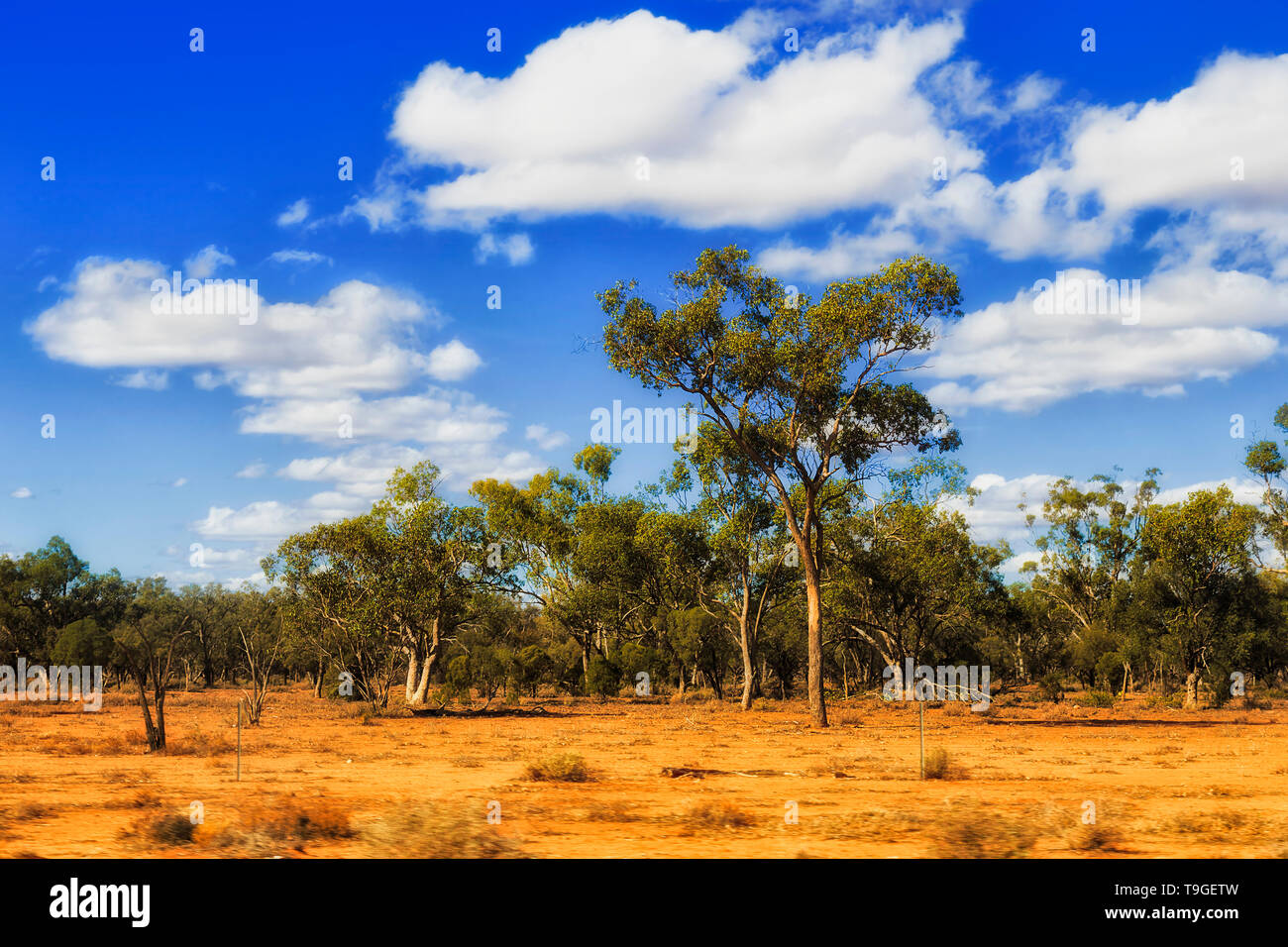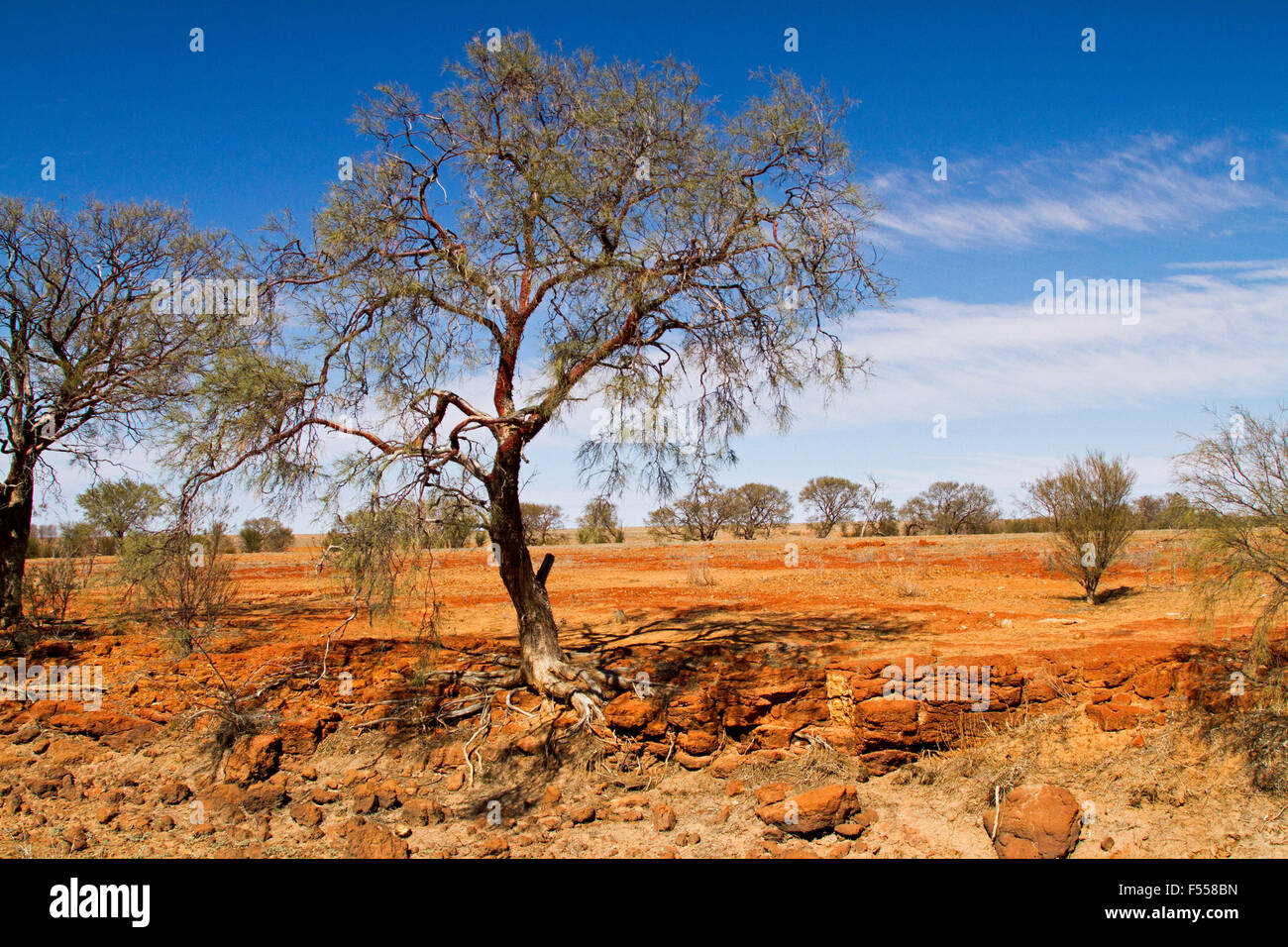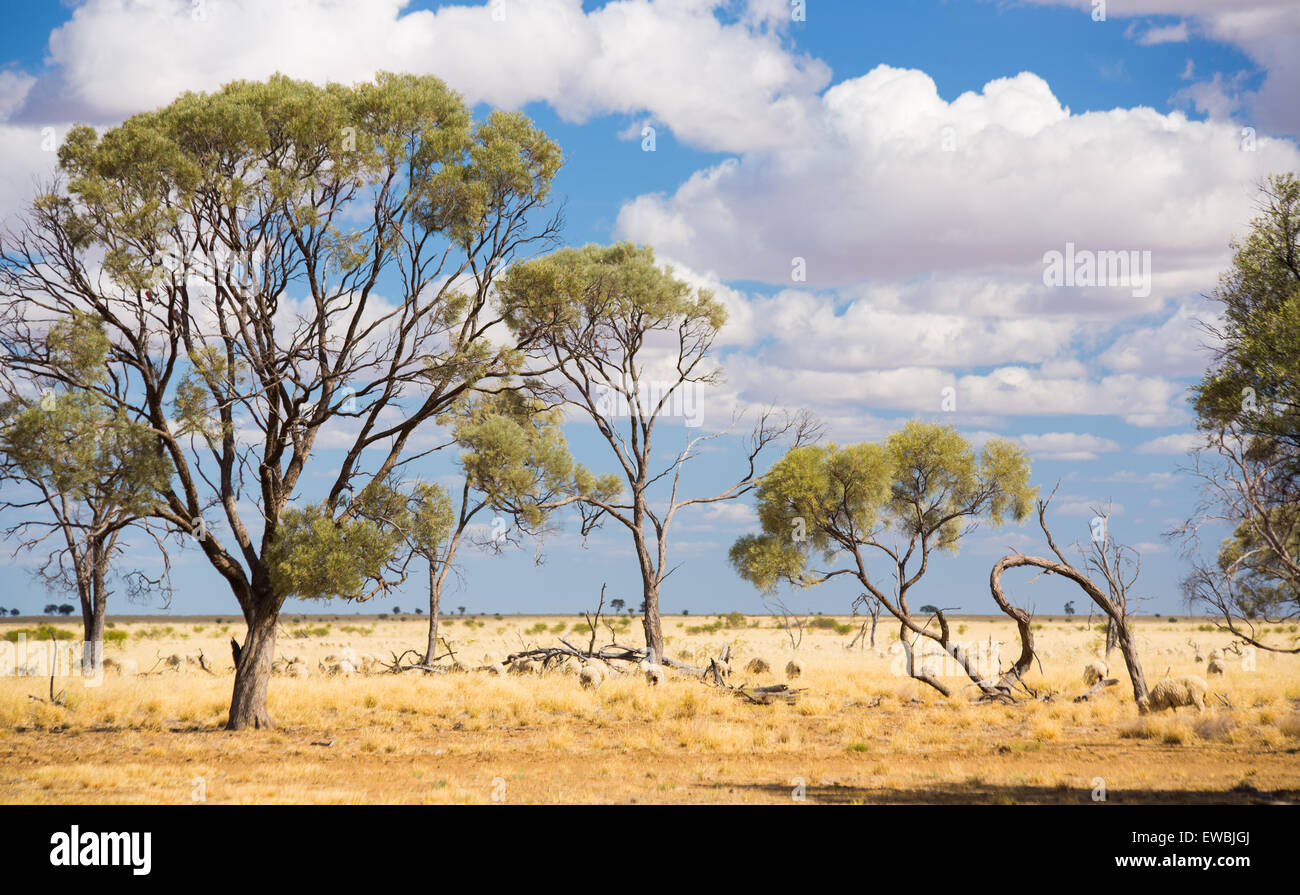Outback Trees: A Symphony of Survival in Australia’s Harsh Landscape
Outback Trees: A Symphony of Survival in Australia’s Harsh Landscape

The Australian outback, a vast expanse of arid and semi-arid land, is a land of extremes. Scorching sun, relentless winds, and limited rainfall create a harsh environment where survival is a constant struggle. Yet, amidst this unforgiving landscape, life persists, and nowhere is this more evident than in the resilience of the outback’s native trees.
These trees, adapted over millennia to the harsh conditions, are a testament to the power of nature to adapt and thrive. Their unique characteristics, from deep taproots to thick bark and waxy leaves, allow them to not only survive but also flourish in a landscape that would challenge even the most seasoned gardener.
Related Articles: Outback Trees: A Symphony of Survival in Australia’s Harsh Landscape
- The Two Hearts: A Symbol Of Love, Unity, And Resilience In Aboriginal Culture
- Beyond The Myth: Unveiling The Complex Reality Of Aboriginal Life Before Colonization
- Beyond The Smiley Face: A Deeper Dive Into Emojis Representing Indigenous Peoples
- Capturing The Beauty Of The Bush: A Guide To Australian Native Flower Drawings
- The 1909 Aboriginal Protection Act: A Legacy Of Dispossession And Control
A Tapestry of Resilience: Exploring the Diversity of Outback Trees
The outback is home to a diverse array of trees, each with its own remarkable story of survival. From the iconic eucalyptus to the hardy mulga and the striking boab, these trees paint a vibrant tapestry of resilience across the Australian landscape.
1. Eucalyptus: The Icon of the Outback
The eucalyptus, or gum tree, is arguably the most recognizable symbol of the Australian outback. With over 700 species, these trees dominate the landscape, their distinctive silvery-grey bark and pungent aroma filling the air.
Adapting to the Arid Environment:
- Deep Taproots: Eucalyptus trees have developed deep taproots that can reach down to groundwater sources, providing them with a constant supply of moisture even during prolonged droughts.
- Waxy Leaves: Their leaves are coated with a waxy layer that helps to reduce water loss through transpiration, a crucial adaptation in the arid climate.
- Essential Oils: Eucalyptus trees produce essential oils that act as a natural defense mechanism against pests and diseases.

2. Mulga: The Backbone of the Outback
The mulga, or Acacia aneura, is another dominant tree species in the outback. Its resilience and adaptability have earned it the nickname "the backbone of the outback."
Survival Strategies:

- Drought Tolerance: Mulga trees are exceptionally drought-tolerant, able to survive for extended periods without rainfall. They can access groundwater through their deep taproots and store water in their woody tissues.
- Nitrogen Fixation: Mulga trees have a symbiotic relationship with nitrogen-fixing bacteria in their roots, allowing them to thrive in nutrient-poor soils.
- Multiple Uses: Mulga wood is highly durable and has been used for centuries by Aboriginal Australians for tools, weapons, and building materials.

3. Boab: The Giant of the Outback
The boab, or Adansonia gregorii, is a truly awe-inspiring tree, renowned for its massive trunk and distinctive bottle-shaped silhouette.
Unique Adaptations:
- Water Storage: Boab trees have evolved a remarkable ability to store vast quantities of water in their massive trunks, enabling them to survive long periods of drought.
- Fire Resistance: Their thick bark is fire-resistant, allowing them to withstand bushfires that often sweep through the outback.
- Cultural Significance: Boab trees hold immense cultural significance for Aboriginal Australians, who have used them for shelter, food, and medicine.
4. Other Notable Outback Trees:
The outback is also home to a wide array of other notable tree species, each with its own unique adaptations:
- Desert Oak (Allocasuarina decaisneana): This hardy tree thrives in harsh conditions, its leaves resembling needles and its roots reaching deep into the ground.
- Quandong (Santalum acuminatum): This parasitic tree produces edible fruits that are a valuable food source for both Aboriginal Australians and wildlife.
- Sturt’s Desert Pea (Swainsona formosa): While not technically a tree, this striking desert flower is a symbol of resilience and beauty in the outback.
The Importance of Outback Trees
The outback’s trees are not merely a beautiful addition to the landscape; they play a vital role in the ecosystem’s health and well-being.
- Habitat and Food Source: They provide shelter and food for a diverse array of wildlife, including birds, reptiles, and mammals.
- Soil Stabilization: Their extensive root systems help to stabilize the soil, preventing erosion and preserving the delicate balance of the ecosystem.
- Water Cycle Regulation: They play a crucial role in regulating the water cycle, absorbing rainfall and releasing moisture back into the atmosphere.
- Cultural Heritage: Outback trees hold immense cultural significance for Aboriginal Australians, who have relied on them for food, medicine, and shelter for millennia.
Threats to Outback Trees
Despite their resilience, outback trees face a number of threats, including:
- Climate Change: Rising temperatures, increased drought frequency, and extreme weather events are putting immense pressure on these trees.
- Land Clearing: Human activities such as land clearing for agriculture and development are destroying vital habitats and disrupting the delicate balance of the ecosystem.
- Overgrazing: Excessive grazing by livestock can damage the delicate root systems of trees, making them more vulnerable to drought and disease.
- Invasive Species: Invasive species, such as feral goats and rabbits, can decimate native vegetation, including outback trees.
Conservation Efforts
Recognizing the importance of outback trees, conservation efforts are underway to protect these vital resources. These efforts include:
- Protected Areas: Establishing protected areas to safeguard critical habitats and prevent further habitat destruction.
- Reforestation Projects: Planting native trees in degraded areas to restore the ecosystem and enhance biodiversity.
- Community Engagement: Educating the public about the importance of outback trees and encouraging them to participate in conservation efforts.
- Sustainable Land Management Practices: Implementing sustainable land management practices, such as rotational grazing and controlled burning, to minimize the impact on native vegetation.
Conclusion
The outback’s trees are a testament to the power of nature to adapt and thrive in the face of adversity. Their resilience, diversity, and cultural significance make them an integral part of the Australian landscape. By understanding their unique adaptations and the threats they face, we can work towards preserving these remarkable trees for future generations.
FAQ: Outback Trees
Q: What are the most common types of trees found in the outback?
A: Some of the most common trees in the outback include eucalyptus (gum trees), mulga (Acacia aneura), boab (Adansonia gregorii), desert oak (Allocasuarina decaisneana), and quandong (Santalum acuminatum).
Q: How do outback trees survive in such harsh conditions?
A: Outback trees have developed a range of adaptations to survive in the harsh outback environment, including deep taproots for accessing groundwater, waxy leaves to reduce water loss, fire-resistant bark, and the ability to store water in their trunks.
Q: What are the main threats facing outback trees?
A: Outback trees face threats from climate change, land clearing, overgrazing, and invasive species.
Q: What can be done to protect outback trees?
A: Conservation efforts to protect outback trees include establishing protected areas, reforestation projects, community engagement, and sustainable land management practices.
Q: What is the cultural significance of outback trees?
A: Outback trees hold immense cultural significance for Aboriginal Australians, who have relied on them for food, medicine, shelter, and spiritual connection for millennia.
Q: What are some interesting facts about outback trees?
A: Some interesting facts about outback trees include:
- Eucalyptus trees are the only trees in the world that can survive in the Australian outback.
- Mulga trees can live for hundreds of years.
- Boab trees can grow to be over 20 meters tall and store thousands of liters of water in their trunks.
- Quandong fruits are a popular bush food and are high in vitamin C.
Q: Can I plant outback trees in my garden?
A: While some outback tree species can be grown in gardens, it’s important to consider their specific needs for water, sunlight, and soil conditions. It’s best to consult with a local nursery or expert before planting outback trees in your garden.
Q: How can I learn more about outback trees?
A: There are many resources available to learn more about outback trees, including books, websites, and documentaries. You can also visit local botanical gardens or national parks to see these remarkable trees firsthand.

Closure
Thus, we hope this article has provided valuable insights into Outback Trees: A Symphony of Survival in Australia’s Harsh Landscape. We thank you for taking the time to read this article. See you in our next article!


